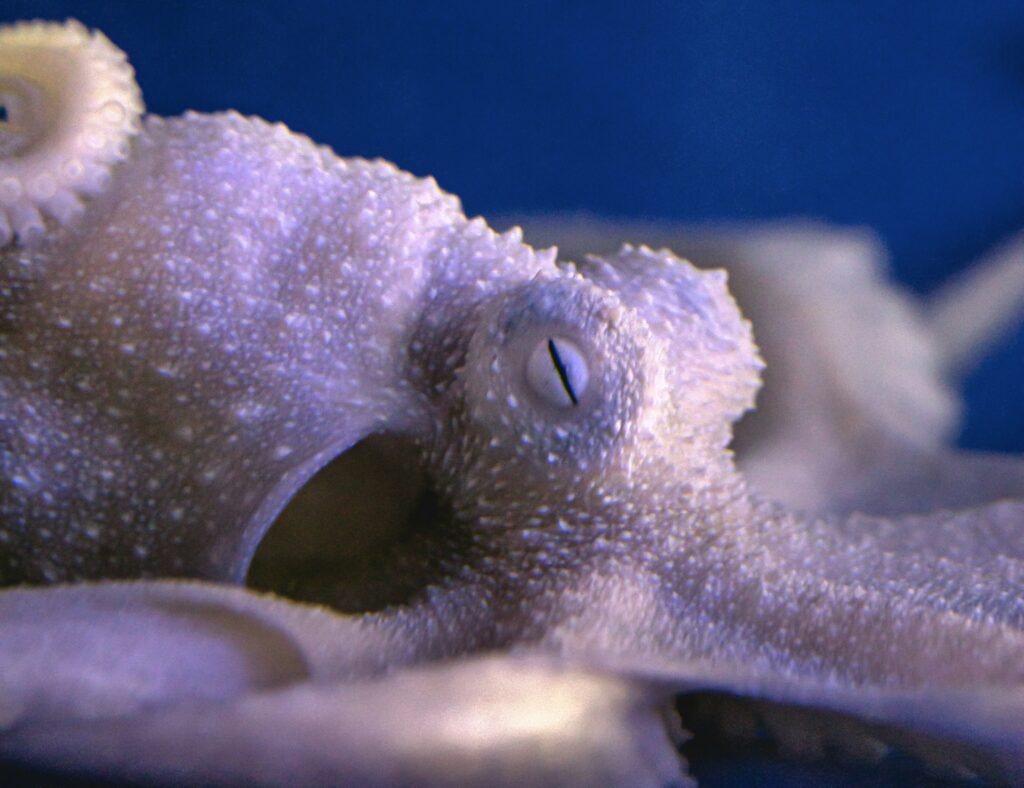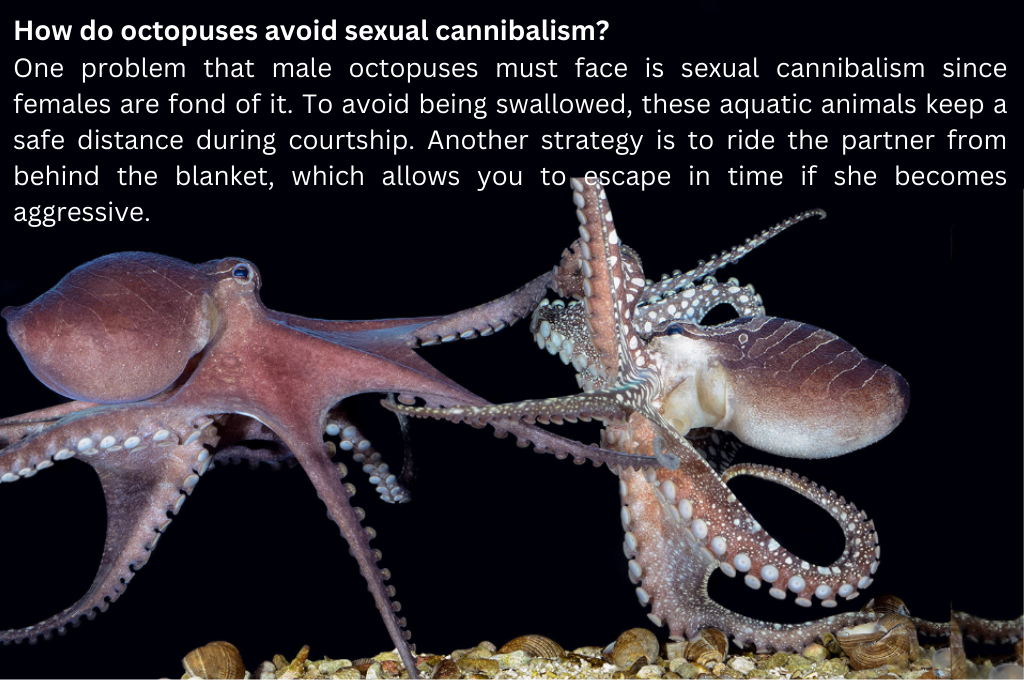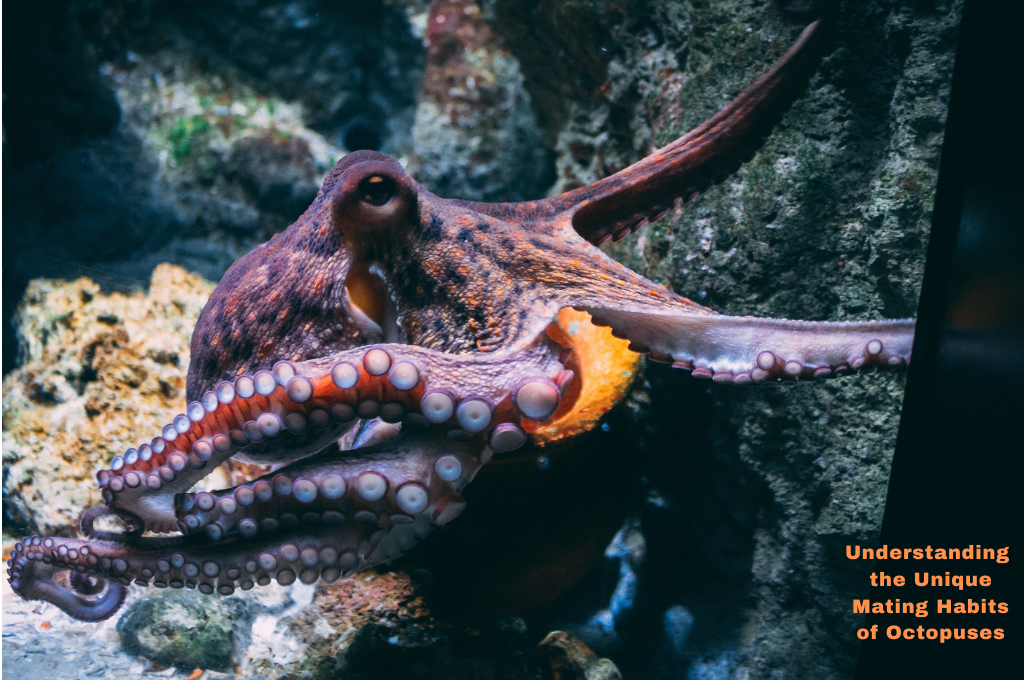Hello fellow readers! Are you interested in knowing How Do Octopuses Mate? You are in the right place! This article will tell you about the fascinating life phases of these magnificent aquatic animals. From their infancy to adulthood, we will dig into the most personal mysteries of octopuses. You will discover how octopuses court and copulate, as well as how they lay their eggs. Get ready to discover everything you need to know about octopus reproduction in an informative and scientific way! You will learn how octopuses courtship and copulate, and how they lay their eggs.
If you love the sea and its creatures, you have surely heard of the octopus. These aquatic organisms are well-known for their intelligence as well as their ability to blend in with their environment. We welcome you to learn everything you need to know about “how to octopus mate” in this post.
Birth of the Octopuses
Up to this point, octopus reproduction is hard work. However, the female still has a lot to do because she has to look after the eggs until they hatch.
The embryo development time varies (depending on temperature and species) but is usually 1 to 4 months. However, there are exceptions, such as the octopus Graneledone boreopacifica, whose gestation lasts on average up to 53 months.
The females do not feed during this phase and only live to look after their future offspring. When hatching begins, in most cases they die exhausted, having completed their task.
At the end of this long reproductive process, the young octopuses hatch from the eggs that the female has suckled to death. The newly hatched young are a miniature copy of the adults. They have their eight arms and are ready to feed on microscopic animals like zooplankton.
As the youngsters mature, they begin to feed on larger animals.
Octopuses, unlike other mollusks, do not undergo metamorphosis and instead develop extremely quickly until they reach the size of the species to which they belong. It is worth noting that the hatchlings are called “paralarvae.”
The way octopuses are born and their entire reproductive process are amazing and full of incredible events. From the moment they are ready to reproduce, they begin a series of processes in which they can lose their lives (both males and females). The offspring are smaller versions of their parents, capable of feeding themselves and populating the oceans.

The life cycle of an octopus
An octopus’ life cycle is a fascinating and sophisticated process that involves numerous stages ranging from infancy to adulthood. The life cycle of an octopus is a fascinating and intricate process that includes various phases from infancy to adulthood. The octopus life cycle differs based on the species, however, it may be classified into two major stages: juvenile and adult.
Youth stage
The octopus is in a period of rapid growth and development during its juvenile stage. The little octopuses develop from eggs laid by the female on the seafloor, which are sheltered by the mother’s tentacles until they hatch. Juvenile octopuses eat mainly on tiny crustaceans and other marine invertebrates during this time. To live in the ocean, young octopuses must grow fast and develop a wide range of talents and abilities.
Adult stage
When the octopus reaches sexual maturity, it enters the adult stage. Octopus reproduction differs per species, and there can be considerable variances in mating and reproductive patterns.
The majority of octopus species are oviparous, which implies that the females lay eggs on the bottom, which hatch. Octopuses reproduce sexually by transferring gametes between the sexes. Mating can last between 30 and 80 minutes and can take place at a distance using hectocotylus. Males have only one testicle and die a few months after copulation. Females have only one ovary and can copulate when still immature, storing the sperm until they are sexually mature.
Females of some octopus species may store sperm for an extended period of time. This allows them to control when their eggs fertilize, boosting their chances of successful reproduction. On the other hand, some species of octopus can also reproduce asexually, dividing into two halves that become two new individuals.
In a nutshell, the octopus life cycle is a fascinating process that includes several phases and reproductive tactics. Understanding this life cycle is critical for octopus conservation and management across the world.
Octopuses and their mating life
There are more octopuses in the world than we can imagine. According to the oceanic
region they inhabit, their appearance and colors will be like this. It is believed that there are more than 200 species of this fascinating octopod. Their lives are very short, those who live the longest do so for a few years and some do not exceed six months.
For this reason, it is very difficult for scientists to know their sexual life. They have only witnessed the mating of a dozen species of octopuses, which does not seem like much but serves at least to make a representation of their reproductive process.
Octopuses live alone, always eating and growing, until one day they become sexually mature and are then ready to find a mate.
The courtship of the octopuses
Experts do not know for sure how octopuses manage to find each other in the vastness of the ocean if they are not gregarious animals. Everything seems to indicate that males spend a lot of time looking for females and that they send chemical signals to attract them. They are not usually demanding in their conquests; however, they do develop interesting courtships when mating.
Male common octopuses show suction cups on their tentacles to declare their sex. They also widen and show black or pale colors. Some types of octopuses show black stripes when the female approaches them.
Others watch the females while they are in their dens and if a male approaches them they establish fierce battles with them. There are very cunning ones that crawl around unseen by the guarding males and mate with the females in secret.

What does mating behavior look like in octopuses?
The mating phase in octopuses is not observed in all species, but there are good reports of the process in some specimens. This ritual is observed in creatures such as Octopus cyanea and Enteroctopus megalocyathus.
The strategies used during mating behavior are fascinating and diverse. These include the floating approach and short micro-contacts. In addition, the male often changes his body coloring to impress the female during his very interesting show.
Despite male octopuses’ best efforts to mate, it is the females who make the final decision whether to accept the male or go in search of other suitors. If the female accepts the male, she will remain silent as her mate approaches and attempts to mate her.
An interesting fact is that the sick females are promiscuous, that is, they can mate with several males throughout their life.
How do octopuses avoid sexual cannibalism?
One problem that male octopuses must face is sexual cannibalism since females are fond of it. To avoid being swallowed, these aquatic animals keep a safe distance during courtship. Another strategy is to ride the partner from behind the blanket, which allows you to escape in time if she becomes aggressive.
Octopus mating:
During octopus mating, the male deposits his sperm in the female cavity using the hectocotyl or hectocotylus – a third arm that serves as a copulatory organ. In some types of octopuses, this structure is disposable and is lost when they finish mating. The process can take hours depending on the species of octopus in question.
Females hold the eggs until they are ready to lay them. The males die shortly after mating; The females stay alive to guard the eggs, but once they hatch, they eventually die.
There is a very rare species from the Pacific that breaks the known mating rules. To begin with, they are gregarious. Females and males mate by bringing their mouths and tentacles together. Furthermore, women do not practice cannibalism. And lastly, they can lay several litters of eggs before dying. Sounds like the most advanced among octopods, right?
In any event, octopus mating is a really strange process in nature, confirming once again the diversity that exists in the animal realm.

In captivity, how do octopuses reproduce?
Octopus reproduction in captivity can be difficult since these creatures are very sensitive to stress and changes in their environment. Breeders, on the other hand, have developed strategies to increase egg mating and hatching in captivity.
The process of egg incubation
The incubation time of octopus eggs varies based on the species and environmental factors. Eggs are vulnerable to predators and severe environmental circumstances throughout the incubation stage. Some octopus species, such as the common octopus, have an incubation period of around 50 days.
Early development of baby octopuses occurs inside the egg. As the octopuses develop within the eggs, their color and texture change. Baby octopuses hatch from eggs as little clones of adults and begin to forage for food in order to live.

Questions and Answers on Octopus Reproduction Mating
A female octopus lays how many eggs?
The amount of eggs laid by a female octopus varies according to species. Some species only produce a few eggs, while others lay hundreds or even thousands.
In captivity, how do octopuses reproduce?
Breeding octopuses in captivity can be difficult since these creatures are extremely sensitive to stress and environmental changes. Breeders, on the other hand, have developed strategies to increase mating and egg hatching in captivity.
Can octopuses change sex?
Yes, several octopus species may change gender throughout their lifetimes. Octopuses may enhance their reproductive capabilities while simultaneously responding to environmental changes via a mechanism known as sequential hermaphroditism.
The curious answer: the name of the reproduction of octopuses
Octopus reproduction is an intriguing mechanism that has piqued the interest of many experts. But did you know that the name of octopus reproduction is quite curious?
The answer is “mating.” Although it may seem like a common name, the truth is that it is not the most appropriate term to describe the reproduction process of octopuses.
This is because octopuses do not have mating per se like other animals do. In reality, what happens is that the male introduces a modified arm called a hectocotyl into the female’s mantle to transfer sperm.
This process is quite complex and fascinating since the hectocotyl is a specialized organ that octopuses use exclusively for reproduction. Additionally, male octopuses can lose the hectocotyl during the mating process, allowing them to escape from predators and regenerate the lost organ.
Conclusion:
In our journey to comprehend the unique mating habits of octopuses, we’ve ventured into the depths of their intriguing life cycle. With over 200 species, these intelligent creatures showcase a diverse range of behaviors, from courtship displays to mating strategies. Octopus reproduction, a complex dance of life, unfolds through stages—juveniles growing swiftly, adults reaching maturity, and the captivating mating rituals.
From suction cups to black stripes, octopuses employ various courtship techniques, avoiding the potential peril of sexual cannibalism. Mating involves the deployment of the hectocotyl, a specialized arm, with males often meeting a post-copulation fate. Some exceptional species challenge known norms, exhibiting gregarious behavior and multiple litters.
Breeding octopuses in captivity is a complex operation that requires balancing stress sensitivity and environmental modifications. We uncover the fascinating process of octopus reproduction, where certain species even have the remarkable capacity to change sex, as we investigate commonly asked topics.
And, interestingly, the term “mating” doesn’t quite capture the complexity of octopus reproduction. Instead, male octopuses introduce a modified arm, the hectocotyl, into the female’s mantle, a process both fascinating and essential for their survival.
In essence, the world of octopus reproduction is a captivating tapestry of life, science, and the extraordinary resilience of these marine marvels.
